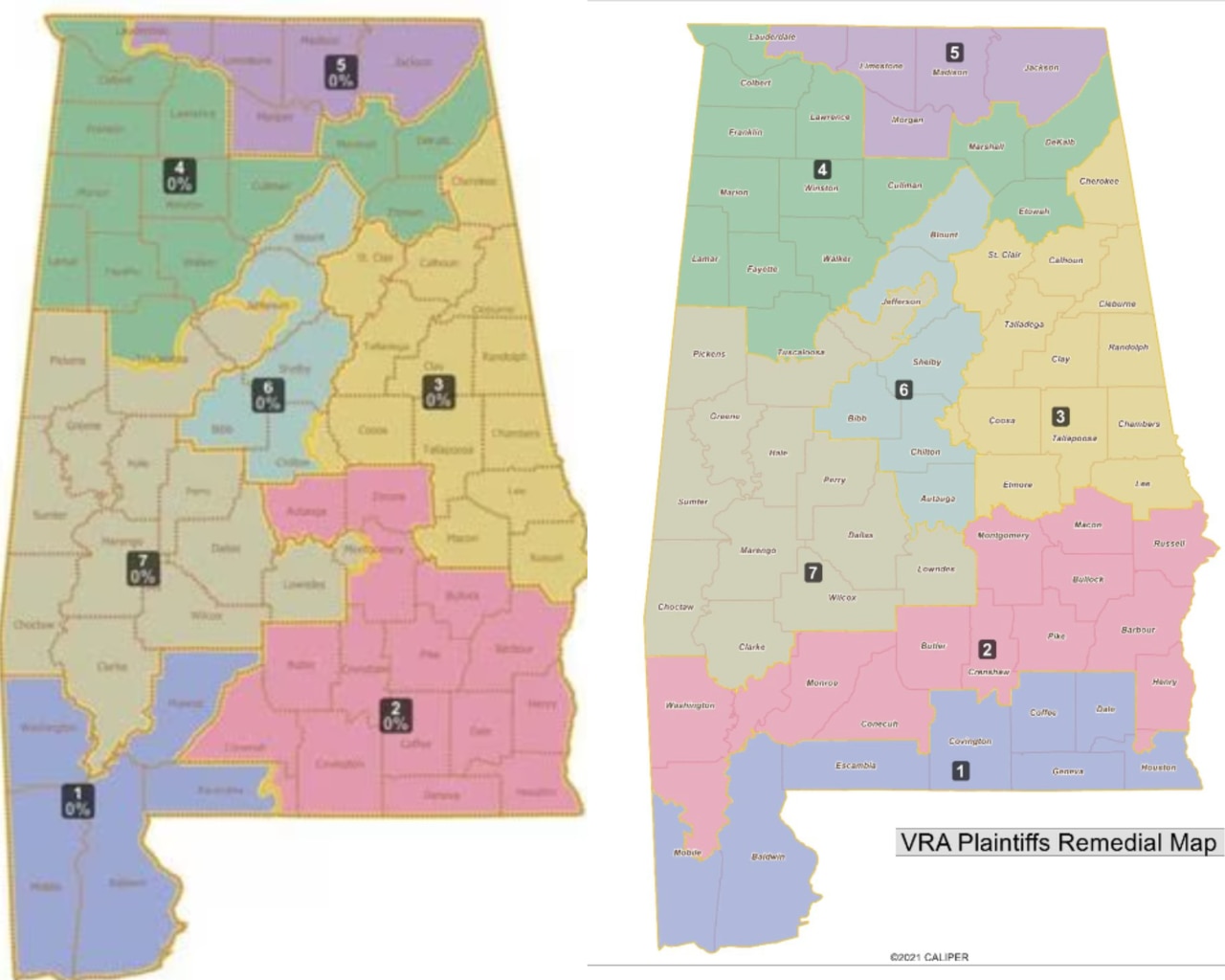Hereâs the Alabama redistricting map Supreme Court Voting Rights Act plaintiffs want adopted
The plaintiffs in the U.S. Supreme Court case that led to a ruling forcing state leaders to draw new congressional districts to increase the Black voter influence have presented their preferred version of the redistricting plan.
The Supreme Court earlier this month upheld a lower court’s ruling that Alabama’s 2021 congressional maps violated the Voting Rights Act of 1965 by diluting Black voting power.
Both courts ordered the state to redraw its congressional lines.
The National Democratic Redistricting Committee (NDRC) along with the NAACP Legal Defense Fund (LFD), the two primary legal representatives in the case, submitted the latest map to the state’s reapportionment office.
A hearing is set Tuesday afternoon at the State House in Montgomery where the maps will be presented.
“Ultimately, this is a spinoff map from one of the maps that was submitted in court that looked to find a good compromise between the two plaintiff groups,” NDRC Executive Director Marina Jenkins told Al.com Saturday.
The latest proposed map from NDRC and LDF has two districts with significant Black voting populations in the current District Seven and a redrawn District Two.
District Seven is currently represented by Rep. Terri Sewell, D-Birmingham, and District Two by Rep. Barry Moore, R-Enterprise.
The proposed second majority Black district would be in District Two, which when redrawn would span the southern portion of the state from east to west, adding Monroe and Washington counties and portions of Mobile and Clarke counties.
The proposed map would also reconfigure the boundaries of District One, represented by Rep. Jerry Carl, R-Mobile, to include five counties in southeast Alabama, and would stretch to the Georgia state line.
The state’s other four districts would be largely unchanged.
“It makes minimal changes to the districts that don’t need to be changed,” Jenkins explained.
On the left is Alabama’s current districting map adopted in 2021. At right, the map proposed by the plaintiffs in the Voting Rights Act case.
“District Seven is kept largely the same. As we’re making these changes, the main thrust of the case was about how the Black Belt communities have had their vote diluted, so this map protects the Black Belt. Whatever is not in District Seven is in District Two. It really is focused on addressing the vote dilution of the Black community that has not been represented.”
Alabama, which is about 27 percent Black, currently has one Black in its congressional delegation – Rep. Sewell, whose district includes Birmingham and spans most of the Black Belt.
Sewell supports the map proposed by NDRC and LDF, calling it a compromise version that has the best chances of meeting a consensus from the state legislature and approval from the court.
“I commend the Milligan and Caster plaintiffs for working together to provide one compromise remedial map. This gives the State Legislature clear direction as to the kind of map that may be acceptable to the federal court,” Sewell told Al.com this afternoon. “I support this map, and it should become the starting point for the Alabama State Legislature as they begin the redistricting process.”
The Supreme Court ruled that a previous map enacted by the Alabama State Legislature denied Black voters an opportunity to elect candidates of their choice by packing them into just one majority Black district and diluting the voting power of other Black voters in the state.
The map and its details were made public in a tweet from Alabama State Rep. Chris England Friday evening. England sits on the legislative redistricting committee.
The latest map is among dozens that were submitted to the committee from various sources.
Jenkins said the NDRC proposal delivers strong merit.
“The court ordered either Black majority districts or a Black opportunity district. The perspective of NDRC is, in Alabama, in order to have an effective opportunity for Black voters, you need to have if not 50 percent or more Black voting age population than something real close,” Jenkins said.
The proposed map meets those conditions, she said.
